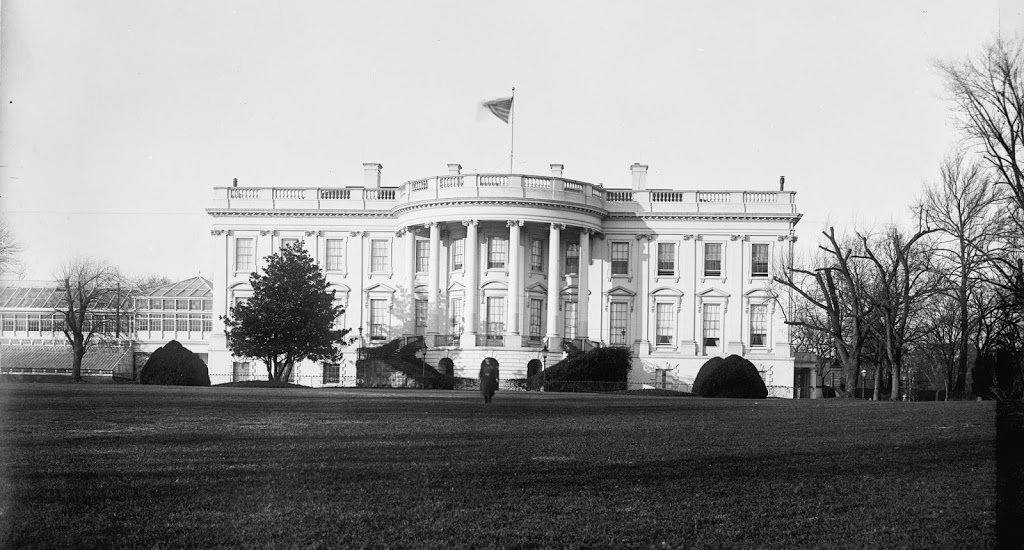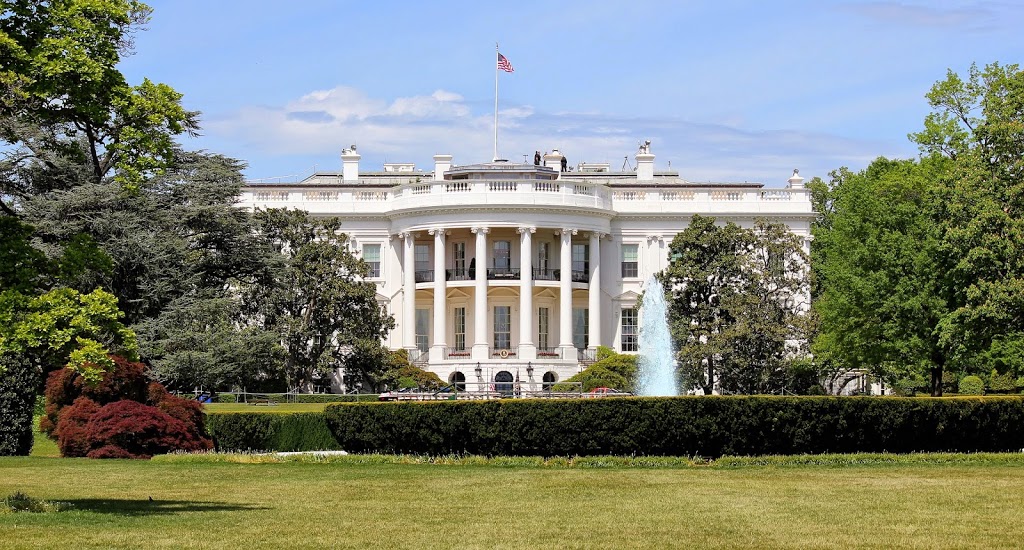The White House, as it appeared in either the 1880s or 1890s. Image courtesy of the Library of Congress, Detroit Publishing Company Collection.
The same view in 2012:
The White House doesn’t look all that different from what it looked like in the late 19th century, and yet almost everything about it has changed. The East Wing and West Wing, which aren’t visible in the 2012 photo, didn’t exist at the time of the first photo, nor did the third floor on the roof, or the second floor balcony behind the pillars. But, the most dramatic changes in the past 120 or so years came in the late 1940’s, when the badly-deteriorated wood frame was in danger of collapse. The entire interior was gutted, the wood frame was replaced with steel, and the interior put back into place afterward (see this photo of bulldozers and dump trucks at work inside the White House). The exterior, however, remains much the same as it did after the reconstruction following its burning during the War of 1812.



The “Truman Balcony” is an eyesore.
Good ideas about historic preservation were hard to come by in the 1940’s when President Truman presided over the gut renovation of the White House. Some of the deficiencies of that work should be remedied or removed and the Truman Balcony is the most apparent of these.
Some of the biggest changes are actually under the Whitehouse. Everyone has heard of the bowling alley in the basement, few realize it’s one of two that have been in the building. The first became the modern situation room under the west wing. On the other side in the 1940s a bomb shelter was added. This was later expanded into a emergency command bunker in the cold war, and upgrades again after 9/11